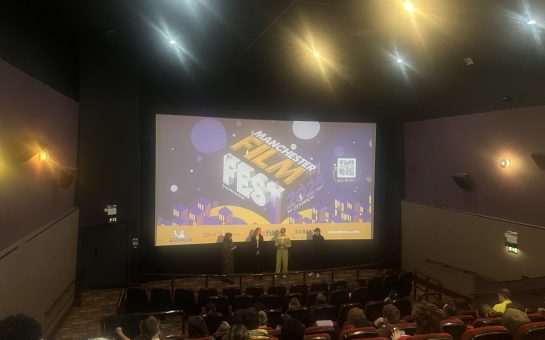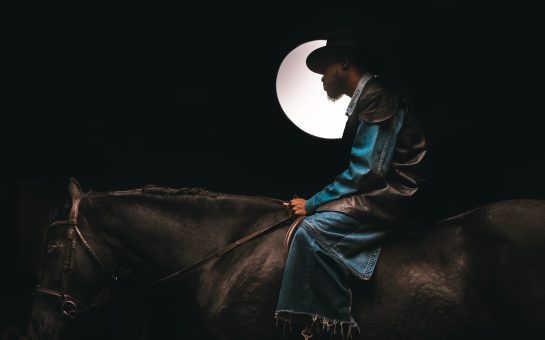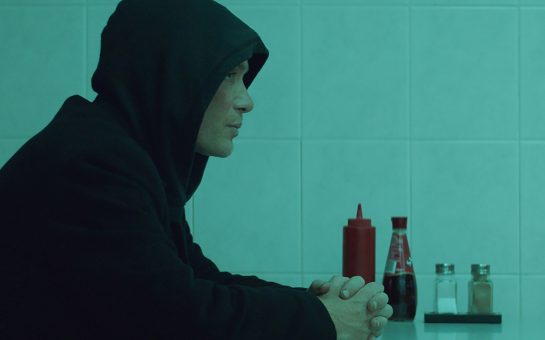‘The most terrifying film you will ever experience’ – that’s the tagline.
The remake of cult horror ‘Evil Dead’ was released yesterday in the UK, more than 30 years since the terrifying tale of five students who become possessed by satanic forces was first released.
So far the film has been a success in the US grossing $26million in its opening weekend.
The original 1981 release, like the remake, features demons, rape and gruesome murder – none of which were out of place in the extreme underground cinema of the 70s and 80s.
However graphic and disturbing the film was, it is one of the most popular video nasties ever made, during a period where violent and bloodthirsty horror movies were released as often as rom coms today.
In celebration of The Evil Dead’s release, MM look back at the original slashers, chillers and video nasties that continue to be remade, reworked and reinvented by today’s directors.
Video nasties and zombies
In the late 1970s, the horror film industry was largely dominated by Italian directors and their low budget scare attempts at horror genres such as Nazi horror, cannibal horror (sometimes even Nazi cannibals) and, of course, zombies.
‘Zombie Holocaust’, ‘Cannibal Terror’ and ‘Night of the Zombies’ are just a few of the low quality flicks that continued into the early 1980’s and have thus spawned new horror genres such as satanic horror and body horror.
Yet all of these were influenced by one man, aptly nicknamed the godfather of zombies.
The original and arguably one of the most prolific horror directors of a generation, George Romero, whose 1968 zombie film ‘Night of the Living Dead’ revolutionised flesh-eating monsters and terrified audiences before ‘extreme cinema’ had really been considered.
Dr David Huxley, senior lecturer of film and media studies at Manchester Metropolitan University, credits Romero as one of the first directors to bring extreme horror to cinemas.
“Romero had a huge hand in what was acceptable in terms of explicit violence and created the ‘new’ zombie in ‘Dawn of the Dead’ and its sequels,” Dr Huxley said.
“This helped to spark an interest in a visceral flesh-eating monster – which was very different to the earlier film zombie of the 1930s – that continues still today.”
At the time of release, audiences were so used to horror of a more moderate variety, such as ‘The Blob’, that they brought children with them to the premier of ‘Night of the Living Dead’.
Robert Ebert, who had attended the premier, said at the time: “The kids in the audience were stunned. There was almost complete silence. The movie had stopped being delightfully scary about halfway through, and had become unexpectedly terrifying.
“I don’t think the younger kids really knew what hit them, they were used to going to movies, sure, and they’d seen some horror movies before, but this was something else.”
Romero went on to release ‘Dawn of the Dead’ in 1978, which was even more gruesome than its predecessor.
One film critic, so terrified at the special effects, walked out after 15 minutes complaining of the explicit nature of some of the scenes.
Dr Huxley also credits Wes Craven for his role in terrifying audiences with his 1972 hit ‘The Last House on the Left’.
The film was so controversial that it was banned in several countries including the UK for nearly 20 years.
Dr Huxley said: “The Last House on the Left’ set a new level – or low depending on your view – in the area of explicit violence and sadism.
“After that it was not possible to make a traditional horror film in the same way,” Dr Huxley explained.
Instead, modern horror directors have been forced to use more controversial images and storylines to compete for the attention of audiences.
The controversial remakes of controversial classics
‘Evil Dead’ combined many aspects of different horror genres such as satanic, slasher, sexual and violent horror all of which popular at the time of release and it was well received by fans.
The film has gained cult status over the years and its remake is proof of its contribution to modern horror.
Robyn Talbot, keen horror blogger and event planner at They Eat Culture, is on a mission to collect every 70’s and 80’s horror VHS – and has a very high opinion of the ‘Evil Dead’, which he calls ‘the birth of comedy horror’.
He said: “Raimi for years had worked on the concept for ‘Evil Dead’ for years and wanted horror to go in a new direction.
“The new ‘Evil Dead’ will have to keep the comedic elements of the plot if they want die-hard fans of the original to respect them. This is the same for all cult horror reboots.”
In recent years, infamous and controversial films such as ‘Maniac’, ‘The Last House on The Left’, ‘Texas Chain Saw Massacre’ and ‘I Spit on your Grave,’ have all been given a Hollywood big-budget remake.
‘Maniac’, re-released last year in the US and set for a UK release imminently, did moderately well with critics and director Franck Khalfoun was delighted with the audience response.
He told MRP: “We had a screening here in Los Angeles and somebody passed out, which I pat myself on the back for. The movie had to creep on you – it’s a different kind of fear; it’s more of a nauseating fear.
“You really have the opportunity to maybe feel the [nausea] of committing crime rather than glorifying it just for the aspect of fun and thrill. The audience gets to experience for the first time how sick [it is to commit murder] – we’re certainly not condoning it, but making a real statement about serial killers.”
However remakes of ‘The Last House on The Left’, ‘Texas Chainsaw Massacre’ and ‘I Spit on Your Grave’ failed to impress audiences on any significant scale, and directors such as Romero have since condemned horror remakes. Many feel the controversy and terror that first surrounded the originals cannot be duplicated.
The new cinema of the extreme
Not everyone has resorted to remaking.
A sordid sea of movies that often trade story in for grisly set-pieces – so much so many have been dubbed ‘torture porn’ – have flooded the horror market, continually dividing even horror fans’ opinion as they push boundaries further and further.
‘Human Centipede’ (and its even more grotesque sibling ‘Human Centipede 2’), ‘Hostel’ and particularly ‘A Serbian Film’ all boast a new level in the cinema of the ‘extreme’.
All four films have graphic sexual scenes, some of which borders on pornography, and storylines that often centres on a simple premise allowing increasingly gruesome set-pieces.
Yet with new directors competing for the crown of Mr Controversial, Dr Huxley believes people become desensitised to graphic violence – but it’s not just due to movies. Video games, the internet and even the news are awash with blood and violence.
He said: “Whether things can get even more violent is debatable – these things tend to go in cycles – more psychological horror tends to become popular as the audience becomes satiated with extreme horror, and then directors find new ways to introduce violent imagery again.”
Mr Talbot shares a similar view and believes that extreme imagery of sexual violence has plagued a wave of new horror extreme films.
He said: “Audiences are tired of the monsters, the supernatural and the gore, directors such as Tom Six and others have decided that shocking their viewers with graphic sexual violence is the way forward but it isn’t.
“Horror is a genre that is supposed to scare not disgust and directors need to be more original, similar to the directors of the horror golden era.”
Image courtesy of TriStar Pictures via YouTube, with thanks.
For more on this story and many others, follow Mancunian Matters on Twitter and Facebook.



